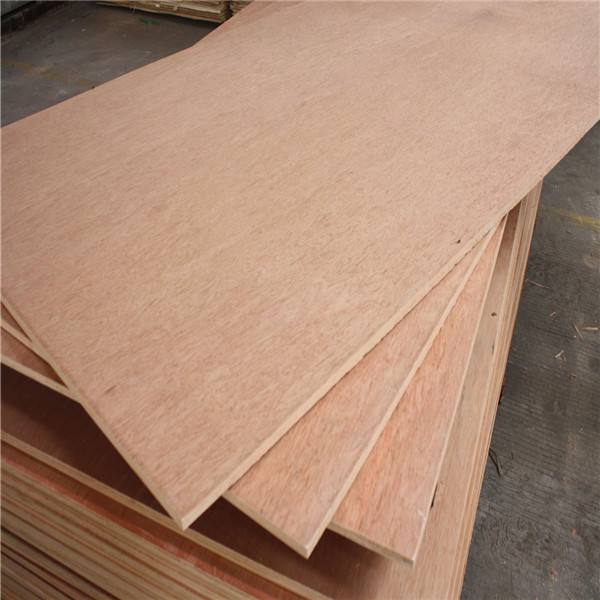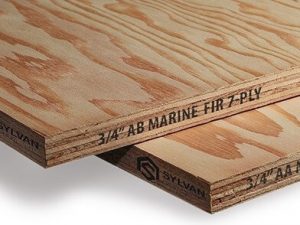What Is Marine Plywood?
What is marine plywood and how to get the best marine plywood So you’ve made the decision to build a boat or a home, but how do you choose the right type of marine plywood for your needs? You’ve probably heard that this type of material is durable, thick, and resistant to warping. But what exactly is this material? And how can you tell the difference between different types? Here’s a look at some of the most important characteristics to look for.

It’s thick
One of the most important questions to ask is how thick is marine plywood. Marine grade plywood is made to withstand continuous immersion in water. It is an excellent choice for docks, boats, lighthouses, and other applications that require high-quality wood. The thickness of the sheet is measured in millimeters and represents its overall quality. The thickness also determines the durability and quality. Here’s some information about marine grade plywood.
A-B marine-grade plywood is 3/4-inch thick and is available in the same length and width dimensions as A-A grade. It is stronger than A-A grade and is also known as face-back Marine plywood. MDO, or medium-density overlay, is another type of exterior-grade plywood. The veneer underneath the sheet is smooth and takes paint well. This type of marine plywood is best used for cabinets and large-scale boat projects.
Unlike exterior-grade plywood, marine grade plywood does not deteriorate after prolonged exposure to moisture. In fact, it has been proven to last decades after exposure. Cornelius Bruinzel, a Dutch door manufacturer, invented marine-grade plywood in the 1930s. Boats made of marine-grade plywood are lighter, stronger, and easier to move around than wooden boats. The same principle applies to building projects. If the plywood is heavy, consider building smaller boats using it instead of large ones.
It’s density
If you’re building a boat or other marine application, you should look for marine grade plywood. Unlike regular exterior plywood, marine plywood has consistent strength across its layers. This makes it less likely to crack when shaped into a curve. Moreover, it is more resistant to rot, warping, and scratching. Here are some benefits of marine plywood. They should be the main focus of your next project. Read on to learn about the different types of marine plywood available.
While regular plywood has a rough exterior surface and no laminated finish, marine plywood is made from five layers of premium hardwood. This means that it has fewer voids and can block water impact. It can also carry heavier internal loads than regular plywood. Regular plywood is typically made from softwood, like pine, and is susceptible to decay and water infiltration, making it unsuitable for marine applications. It also has a much higher density than regular plywood, making it ten times stronger than its counterpart.
Although both marine ply and MDO are strong, they aren’t waterproof. Neither plywood has any rot-inhibiting chemicals. Therefore, boards exposed to moisture will absorb it. Proper coating and careful cutting are necessary to prevent this. In addition to this, marine plywood is more expensive than standard wood. This is why you should choose it if you want your boat to withstand rougher conditions. However, you should look for a marine plywood with a higher density than MDO.
It’s resistant to warping
The construction of marine plywood is designed to prevent it from warping. Unlike ordinary plywood, marine plywood is made of high-grade veneers and a special waterproof glue. This type of plywood is especially suitable for use in water. The reason for warping is moisture. When plywood is exposed to water for an extended period of time, the material begins to degrade. Eventually, the wood becomes brittle, crumbling, or warped.
There are many benefits of marine plywood. Its ability to resist boiling water makes it a great choice for boats. It is also a stronger alternative than standard three-layer plywood. This type of plywood is designed to resist warping, rotting, and shrinking. It can also be used in buildings near water. As a result, it’s perfect for those who live near water. Another great advantage of marine plywood is that it’s resistant to warping, so you don’t have to worry about your boat’s structural integrity.
Another key advantage of marine plywood is its resistance to rot. The waterproof glue used in marine plywood prevents wood from delaminating. This is particularly important for boat hulls, since wet wood will affect the structural integrity of the plywood. The waterproof glue also prevents water damage caused by damaged hull finishes. A boat’s hull will remain remarkably intact even with a dented or cracked finish.
It’s durable
If you’re planning on building a boat, you might want to consider using marine plywood instead of regular plywood. This material is scratch and impact resistant, and its hard exterior makes it highly durable. This makes it a popular choice for both residential and commercial construction. It is also easily available in the wood market, and comes in a variety of thicknesses. Unlike regular plywood, marine plywood doesn’t have joints and holds nails and screws well. The material is also treated with chemicals to resist ants and termites.
While most marine-grade plywood is made from Douglas fir or Western larch, Woodshop prefers Gaboon timber, as it is lightweight, durable, and flexible. Woodshop stocks several different thicknesses of marine-grade plywood, and can custom-cut your project to your specifications. If you’re considering building a boat, it is worth the investment to consider marine-grade plywood when building. Here are some tips on how to determine whether marine plywood is durable:
It is also more expensive to ship. It should be lightweight if it’s hung or placed on the floor. However, it’s also better to use denser, heavier furniture. This way, there won’t be as much movement along the bottom surface. Knots in marine-grade plywood are more difficult to remove than knots in pressure-treated plywood, because these wood-plywood is made from lesser-grade materials.
It’s easy to cut
There are many advantages of marine plywood. It is lightweight, easy to cut, and has a smooth, shiny surface. There are extra layers of moisture-resistant glue on the outermost veneers, making it easy to paint and maintain a beautiful finish. It also expands and contracts without cracking or breaking, making it an excellent choice for boats, yachts, and more. The smooth surface makes it easier to cut, shape, and finish than standard plywood.
Despite its ease of cutting, marine plywood can be a little difficult to work with. The process isn’t complicated, but it does require the right tools and techniques. A heat gun can be used to soften the wood enough to make it bend. If the part is pliable enough, it can be clamped in place for further shaping. You can also use a heat gun to create sharp corners and edges.
When you purchase marine plywood, make sure that the material is waterproof. Regular plywood has holes and is not water-resistant. Because marine plywood is waterproof, it won’t fall apart in high humidity or boiling temperatures. It’s also easy to cut and sand clean. Higher-grade marine plywood may have some knots or knotholes. Regardless, the material should last for years. And if you don’t plan to use it for boat building, marine plywood is easy to cut and sand clean.
It’s flexible
If you want a structural board that will withstand extreme forces, marine plywood is the way to go. It is made from woods that have high density and impact-finishing power, so it is 10 times stronger than regular plywood. While regular plywood is brittle and will break under pressure, marine plywood is more flexible, and has a tougher outer layer than other types of wood. This makes it an excellent choice for everyday use on boats, yachts, and other watercraft.
When it comes to flexibility, flexible marine plywood has the advantage of being easy to cut and bend, but it still maintains structural integrity. Additionally, this material is scratch-proof and won’t deform even in extreme marine conditions. As it’s lightweight, it’s easy to transport and store. And because it’s flexible, it doesn’t need to be glued or nailed together to achieve its desired shape. It’s also a great choice for boats due to its low weight and easy installation.
Because it is made from thin wood, marine plywood is both durable and flexible. Its construction also helps keep the panel rigid at both ends. Marine plywood does not have knots or holes, but its glue treatment makes it waterproof. The wood layers are bonded together with heat and pressure and are usually treated with a water-resistant structural adhesive. This glue is usually clear epoxy or resorcinol-type glue. Once the glue dries, it will leave a strong finish.

